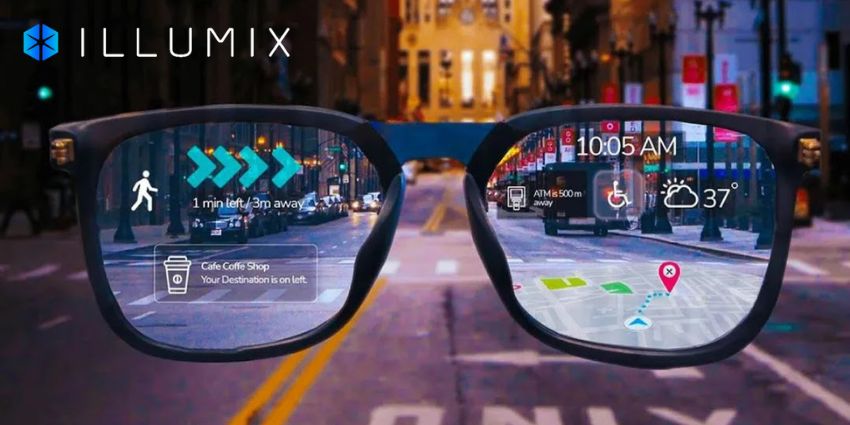Smart glasses have been “the next big thing” for almost a decade, and Meta has clearly been leading the way for most teams. The Meta Ray-Bans are some of the most popular smart specs in the industry, but up until recently, they lacked something valuable: a built-in display.
Now, the new Meta Ray Ban Display glasses have officially arrived. They went on sale in the United States on September 30, while customers in the United Kingdom, France, Italy, and Canada will have to wait until 2026.
For many people, the wait will be worthwhile. The Display model introduces a new approach to smart eyewear. It looks and feels like a familiar pair of Ray-Bans but carries much more behind the lens. A micro-LED display sits quietly inside, projecting captions, directions, messages, or even a live video call straight into view. For business leaders looking for faster communication and smoother collaboration, this might be the moment smart glasses finally become part of real workplace strategy.
What the Meta Ray-Ban Display Glasses Can Do
At first glance, the Meta Ray Ban Display looks like any other pair of Ray-Bans. You wouldn’t guess there’s tech inside at all, which is exactly why people notice them. They feel familiar, not futuristic.
Look closer and a small screen comes to life inside the lens. It’s a micro-LED panel with clear detail and surprising brightness; sharp even when sunlight hits it straight on. The field of view is small enough to stay discreet but wide enough to read what matters. A quick glance can show directions to a meeting, captions during a video call, or a short message from your team.
The glasses are priced at about $799, a figure that also covers the Neural Band. The slim wrist strap reads tiny muscle movements, letting you control the display or take photos without actually touching the frames. It runs through most of a workday on a single charge and shrugs off water or light rain without issue.
In daily use, the performance feels steady and dependable. The glasses themselves last around six hours, while the folding case adds another thirty. A 12-megapixel wide camera records video in 1440p at 30 frames per second, which is more than enough for remote support calls or quick field documentation. At roughly seventy grams, the frames are light and comfortable, though by the end of a long day you’ll know they’re there.
What makes the Meta Ray Ban range stand out isn’t just the hardware. It’s the way Meta’s software turns them into a working tool. Voice translation, live navigation, and instant messaging all run smoothly. Accessibility options are already built in, too, such as screen-reader and magnification support, plus prescription lenses from −4.00 to +4.00, making the glasses usable across diverse teams.
For those in sport or field operations, the Oakley Meta Vanguard joined the line-up on October 21 too, at £499, pushing the brand deeper into task-specific wearables. Plus, with Gen 3 rumors pointing to better battery and on-device AI, it’s clear this isn’t a one-off experiment; it’s the beginning of Meta’s wearable ecosystem.
Business Use Cases for the Meta Ray Ban Display Glasses
Ask any professional what slows them down and you’ll often hear the same thing: too many screens. Eyes bounce from laptop to phone to tablet and back again. The Meta Ray Ban Display breaks that cycle.
Picture a worker standing in a warehouse with both hands full as a shipment update appears right in front of their eyes. No juggling screens, no hunting for a device. Or imagine a field engineer streaming what they see to a remote expert while staying focused on the equipment. That’s where the Meta AR Glasses shine. They make collaboration feel effortless, like a conversation instead of another app to manage.
Hybrid teams will see the benefit instantly. A manager walking between departments can glance at translated comments, meeting captions, or quick messages without breaking stride.
The real strength of the Meta Ray Ban design lies in how naturally it fits into daily communication. A short voice command can bring up captions from a Teams or Zoom meeting, send a note through WhatsApp or Messenger, or capture a quick video update for coworkers. The Neural Band worn around the wrist reads subtle finger movements to accept or dismiss alerts. No tapping on a screen, no switching between devices, only steady, uninterrupted work.
Enterprise leaders are clearly starting to see the value. Counterpoint Research reported that global smart-glasses shipments jumped 110 percent in the first half of 2025, with Meta capturing about 70 percent of the market. That kind of momentum doesn’t come from curiosity alone; it’s being fuelled by real enterprise pilots in logistics, healthcare, construction, and remote field service.
What companies are learning is simple: when workers aren’t constantly switching devices, they stay in the moment. They react faster, communicate more clearly, and cut small delays that add up over time. The Meta Ray Ban Display glasses don’t just promise hands-free communication; they deliver heads-up focus.
Workplace Management, Deployment & ROI
Rolling out wearables like the Meta Ray Ban Display glasses isn’t as simple as handing out another device. It’s closer to introducing a new work habit that blends digital access with real-world presence. For many companies, that shift will start small, with pilot programs inside departments that live and breathe mobility: operations, logistics, field engineering, sales, and facilities management.
At roughly $799 per unit (including the Neural Band), the cost is significant enough to make CFOs pause. Still, it’s not out of reach for organizations already equipping employees with smartphones, tablets, and laptops. What matters is whether that investment translates into time saved and errors avoided. Early trials in field service and manufacturing suggest it can.
When employees can bring up instructions, record inspections, or request live support without stepping away from their task, productivity climbs fast. Managing the Meta Ray Ban Display devices is surprisingly simple too. They connect through the Meta app, can be reset securely, and include passcode protection to keep data safe.
For workplace leaders, the strategy is less about the device itself and more about designing moments where it adds value. Replacing clipboards on a warehouse floor. Enabling instant video capture for safety checks. Giving remote supervisors a true first-person view of issues before they escalate. Those small, repeatable wins compound fast.
Meta Ray-Ban Display Glasses: The Risks to Watch
Every breakthrough product has a reality check, and the Meta Ray Ban Display is no exception. While it’s easily the most polished entry Meta has released, there are still limits business buyers should weigh before going all-in.
The first is maturity. Right now, the glasses don’t support a full app store, which means their universe of tools is tightly controlled through the Meta AI app. That’s great for security but restrictive for organizations hoping to integrate custom dashboards or proprietary software. IT teams will need to treat this as a communications device first, not a data-heavy workstation.
Battery life is another practical constraint. Six hours of active use is fine for short field shifts or hybrid meetings, but won’t carry a frontline worker through a twelve-hour rotation. The folding case offers about thirty hours of additional charge, yet swapping mid-shift isn’t ideal. Comfort follows a similar story; at around seventy grams, the glasses are light for smart wearables but heavier than standard frames. Long days could bring fatigue or pressure points.
Privacy is another possible issue. Cameras and microphones in a workplace make people cautious. Even with visible indicator lights and published usage rules, leaders need to keep the dialogue open. Employees should understand when recording is acceptable, what happens to the data afterward, and how to switch features off in sensitive areas.
Durability and serviceability also deserve a look. Teardowns have shown that the Meta AR Glasses aren’t built for easy repair, meaning lost or damaged units might need full replacement. Plus, while the Neural Band is a marvel of subtle control, replacements cost roughly $199, another line item to factor into TCO.
Still, none of these risks outweigh the promise. Every emerging category starts with rough edges. The key is to recognize them early and plan around them, so that when the Meta Ray Ban ecosystem matures, your organization is already ahead of the curve.
Market Outlook & Future Roadmap
The smart glasses market has officially entered its growth phase. What used to be a niche for tech enthusiasts is fast becoming a legitimate category within business hardware budgets. The Meta Ray Ban Display could pave the way for ongoing momentum.
Looking forward, the company’s roadmap points toward deeper AI integration. The upcoming Gen 3 Meta AR Glasses could add improved battery life, faster neural processing, and expanded language translation on-device. They’ll likely continue using the Neural Band as a low-effort control surface, giving users a subtle way to interact without breaking focus. “Hypernova” rumors, floated in early reports, suggest Meta is already thinking beyond notifications and photos, toward wearables that could one day replace the smartphone entirely.
There’s a sense that we’re watching a category find its rhythm. The Meta Ray Ban range won’t just compete with Samsung, Apple, or XReal; it’ll compete with the smartphone itself as the interface of daily work.







